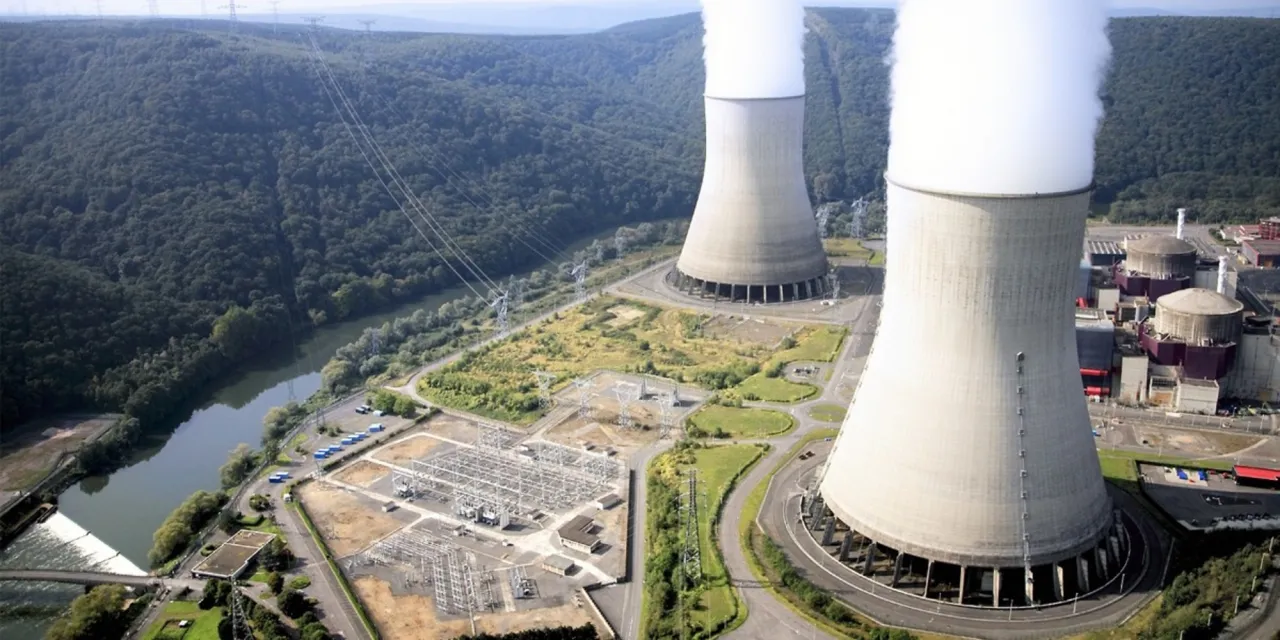
As the global demand for energy skyrockets, humanity faces a pivotal juncture, with the next five decades poised to witness energy consumption surpassing all recorded history. Fossil fuels, the primary energy source, offer a limited window of approximately 60 years, compelling the exploration of alternative power production methods. Amidst this quest, nuclear energy experiences a resurgence, hailed for its stability and capacity to meet growing electricity needs. This article meticulously dissects the myriad advantages and disadvantages of nuclear energy, offering a nuanced perspective on this complex and controversial topic.
Advantages of Nuclear Energy
1. Enormous Capacity
Nuclear energy boasts a staggering capacity, with a mere kilogram of 4% enriched fuel-grade uranium capable of releasing the equivalent energy of 100 tons of high-grade coal. This stability positions it as a potent baseline energy source compatible with global power grids.
2. Fuel Reusability
The reusability of nuclear energy fuels, such as Uranium-235, distinguishes it from traditional fossil fuels. Unlike the non-reusable slag or ash from fossil fuel consumption, nuclear facilities can recycle and reuse certain elements, potentially leading to zero waste in the future.
3. Greenhouse Gas Emission Reduction
Despite initial greenhouse gas emissions during the construction phase, nuclear energy substantially reduces emissions post-implementation. European data reveals a 700 million ton reduction in CO2 emissions compared to fossil fuels, making it a pivotal player in combating climate change.
4. Economic Boost
Nuclear energy contributes significantly to a country’s economic development, offering cost-competitive electricity generation. A flourishing nuclear sector ensures energy independence, stability, and economic growth.
5. Exceptionally Reliable Facilities
Nuclear power plants demonstrate exceptional reliability, surpassing initial lifespan estimates. Ongoing technological advancements and fuel recycling innovations contribute to prolonged operational efficiency.
6. Safety
Despite public apprehension due to incidents like Chernobyl, nuclear energy boasts a low mortality rate compared to other energy sources. Fatalities per 1 trillion kilowatts generated are significantly lower than coal-fired and even eco-friendly options like solar energy.
7. Manageable Costs
Nuclear energy’s cost, especially post-construction, is competitive with other forms of electricity generation. Front-end costs constitute only about 15%, providing long-term manageability for developed countries.
8. Proven and Reliable
Over 30 countries rely on nuclear energy, constituting 10% of global electricity production. With a track record of reliability, nuclear power supports diverse energy needs.
9. High Efficiency
Nuclear energy demonstrates high efficiency, generating power for up to 36 months without interruption. It outperforms traditional technologies and operates consistently, unaffected by weather conditions.
10. High Power Density
Nuclear power exhibits one of the highest power densities globally, requiring minimal fuel for substantial energy production compared to other sources.
11. Versatility
Nuclear energy finds application beyond electricity generation, including space exploration. Tests like the SNAP-10A reactor in 1965 highlight its potential as a power source in various contexts.
Disadvantages of Nuclear Energy
1. Accidents and Threats
The specter of accidents looms over nuclear energy, epitomized by Chernobyl and Fukushima. Radiation fallout poses severe health risks and long-term consequences, necessitating stringent safety measures.
2. Weaponization
The dual-use nature of nuclear energy raises concerns about its potential weaponization, as witnessed in historical events like Hiroshima and Nagasaki. Preventative measures are imperative to thwart its misuse.
3. Radioactive Waste
While clean-burning, nuclear energy produces hazardous radioactive waste. Inadequate disposal could perpetuate environmental harm for thousands of years, incurring substantial cleanup costs.
4. Health Risks
Ionizing radiation from nuclear energy can lead to immediate health impacts, especially in the event of accidents. Stringent safety protocols are essential to protect workers from exposure.
5. Non-renewable Resource
Despite its distinct classification from fossil fuels, nuclear energy depends on finite uranium resources, challenging its long-term sustainability. Finding replacements becomes imperative as uranium reserves dwindle.
6. Long-term Storage Costs
The exorbitant costs associated with storing nuclear waste pose a financial burden. Incomplete projects, like the Yucca Mountain repository, exacerbate the challenge of managing accumulated waste.
7. Uranium Mining Environmental Impact
Uranium mining, a prerequisite for nuclear energy, involves environmentally damaging processes. Drilling holes, open-pit mining, and associated environmental issues contribute to the industry’s ecological footprint.
8. Transmission Losses
Transmitting nuclear energy incurs losses, demanding high-voltage transmission lines. The costs and infrastructure required for efficient transmission contribute to overall expenses.
9. Lack of a Backup Plan
With the nuclear energy industry lagging behind fossil fuels, the absence of a viable backup plan poses a substantial challenge. An expedited transition is necessary to safeguard future energy needs.
10. Prolonged Construction Periods
The protracted construction period of nuclear facilities, averaging 14.5 years, poses challenges in addressing urgent energy needs. Alternatives like fossil fuel plants or renewables become more appealing due to faster implementation.
Conclusion
The dichotomy of advantages and disadvantages encapsulates the risk-reward scenario of nuclear energy. While acknowledging potential hazards and environmental concerns, the efficiency, capacity, and emission reduction benefits underscore its role in the energy landscape. Proactive safety measures, technological innovations, and sustainable practices are
essential for harnessing nuclear energy’s potential without compromising the well-being of society and the planet. The nuanced evaluation presented here aims to inform a balanced discourse on the future of nuclear energy in our quest for sustainable and reliable power sources.





